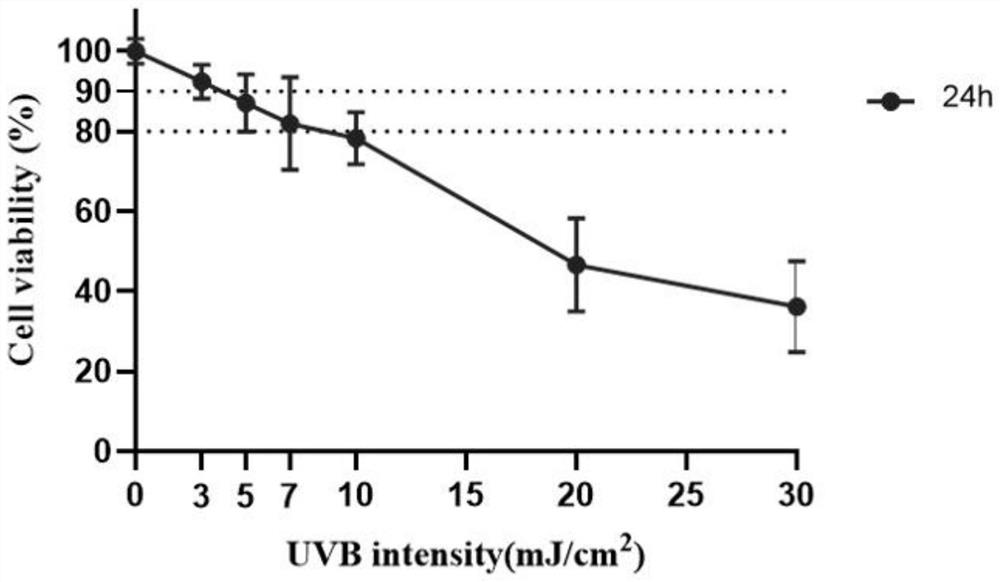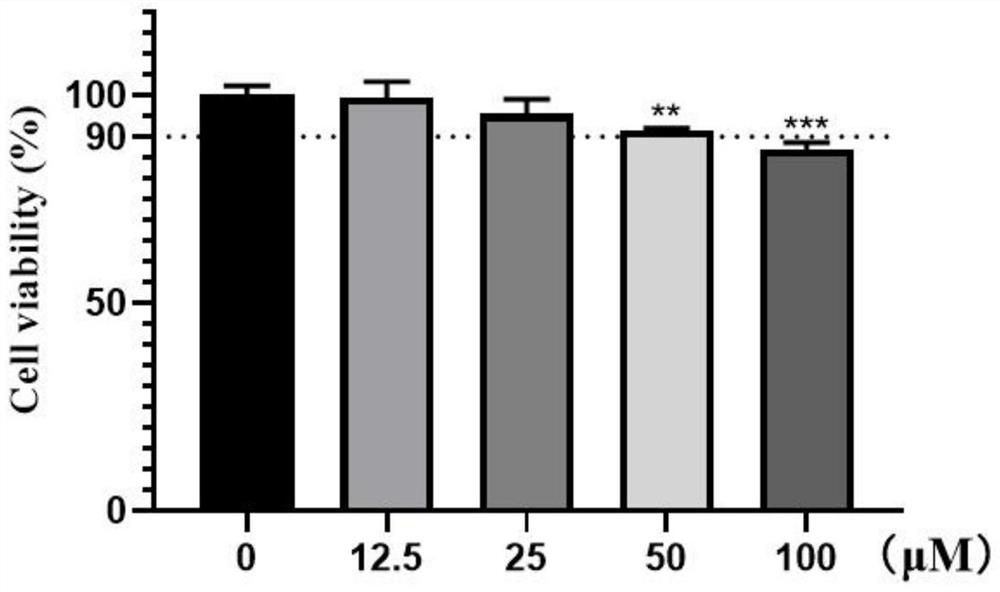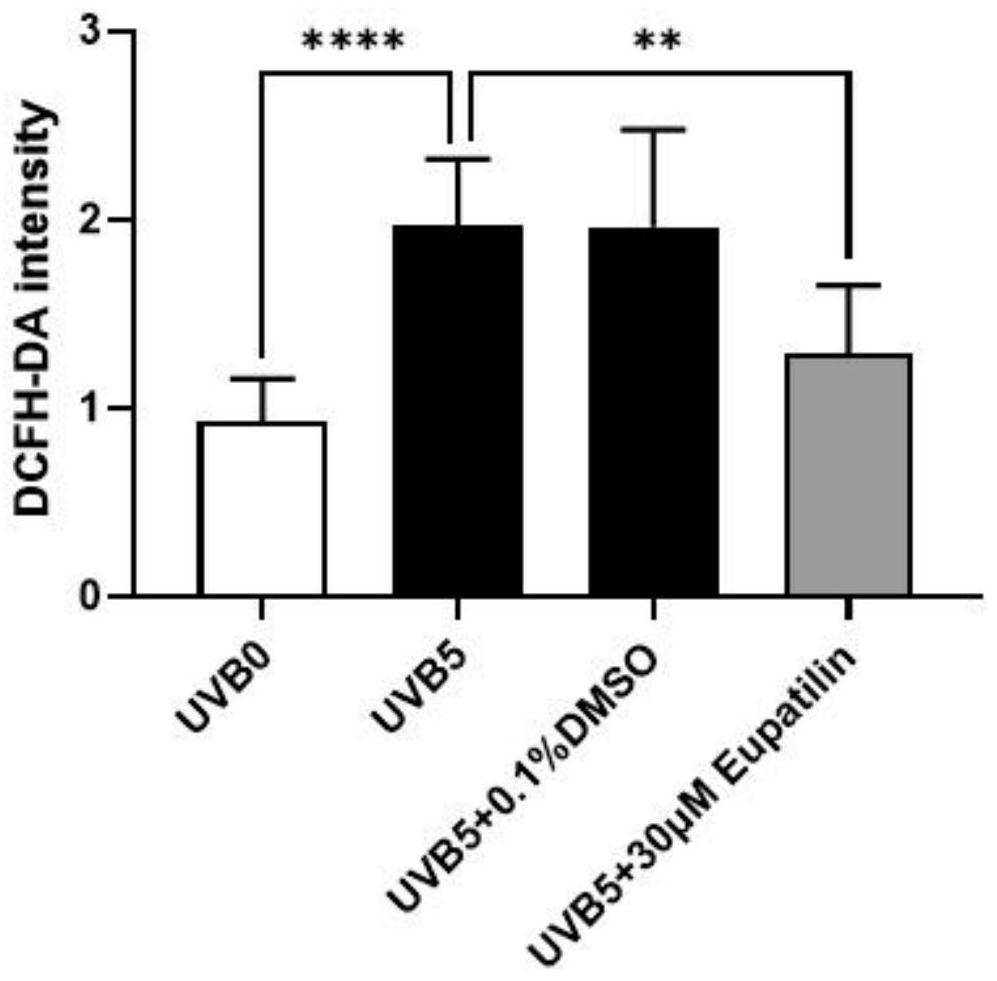Application of eupatilin in preparation of product for resisting skin light injury
A technology of eupholzanthin and photodamage, which is applied in the field of biomedicine to improve skin wrinkle formation and cell oxidative damage
- Summary
- Abstract
- Description
- Claims
- Application Information
AI Technical Summary
Problems solved by technology
Method used
Image
Examples
Embodiment 1
[0036] Induction of photoaging damage in HaCaT cells
[0037] HaCaT cells were seeded in 96-well plates, and when they grew to a density of 50%, 0, 3, 5, 7, 10, 20, 30 mJ / cm 2 After continuing to culture for 24 hours, use Beyontian CCK8 kit to detect the cell survival rate under different ultraviolet radiation doses.
[0038] figure 1 It was shown that with the increase of UVB radiation dose, the survival rate of cells decreased gradually. The dose of UVB radiation should be above 80% of the cell survival rate, so choose the dose of UVB as 5mJ / cm 2 for subsequent experiments.
Embodiment 2
[0040] Toxicity of eupholzanthin to HaCaT cells
[0041] HaCaT cells were seeded in a 96-well plate, and when they grew to a density of 50%, they were treated with 0, 12.5, 25, 50, and 100 μM concentrations of eupholzanthin (using DMSO as a solvent), and after continuing to culture for 24 hours, they were treated with Phi Yuntian CCK8 kit is used to detect the cell survival rate under different doses.
[0042] according to figure 2 As a result, based on the cell viability of 90% as the standard, the maximum non-toxic concentration within the experimental range was 25 μM. At the same time, combined with the literature reports on the toxicity of eupholzanthin, subsequent experiments were carried out at a concentration of eupholzanthin of 30 μM.
Embodiment 3
[0044] Improvement effect on UVB-induced oxidative damage of HaCaT cells
[0045] Reactive oxygen species (ROS), lipid peroxidation product malondialdehyde (MDA), antioxidant enzyme superoxide dismutase (SOD) were used as indicators for research.
[0046] 1. Reactive oxygen species (ROS)
[0047]HaCaT cells were seeded in a 96-well plate, and when they grew to a density of 50%, they were treated with UVB, UVB+ with a concentration of 100 μM eupholzanthin, and UVB+0.1% DMSO, while the cells in the blank control group were not treated with any treatment (marked as UVB0); after each group continued to culture for 24 hours, the Beyontian ROS detection kit was used to detect the improvement effect of eupholzanthin on UVB-induced ROS accumulation.
[0048] The intracellular ROS level of HaCaT cells was characterized by the fluorescence intensity of DCFH-DA probe. image 3 It was shown that after HaCaT cells were irradiated with UVB, the level of intracellular ROS was significantly...
PUM
 Login to View More
Login to View More Abstract
Description
Claims
Application Information
 Login to View More
Login to View More - R&D
- Intellectual Property
- Life Sciences
- Materials
- Tech Scout
- Unparalleled Data Quality
- Higher Quality Content
- 60% Fewer Hallucinations
Browse by: Latest US Patents, China's latest patents, Technical Efficacy Thesaurus, Application Domain, Technology Topic, Popular Technical Reports.
© 2025 PatSnap. All rights reserved.Legal|Privacy policy|Modern Slavery Act Transparency Statement|Sitemap|About US| Contact US: help@patsnap.com



